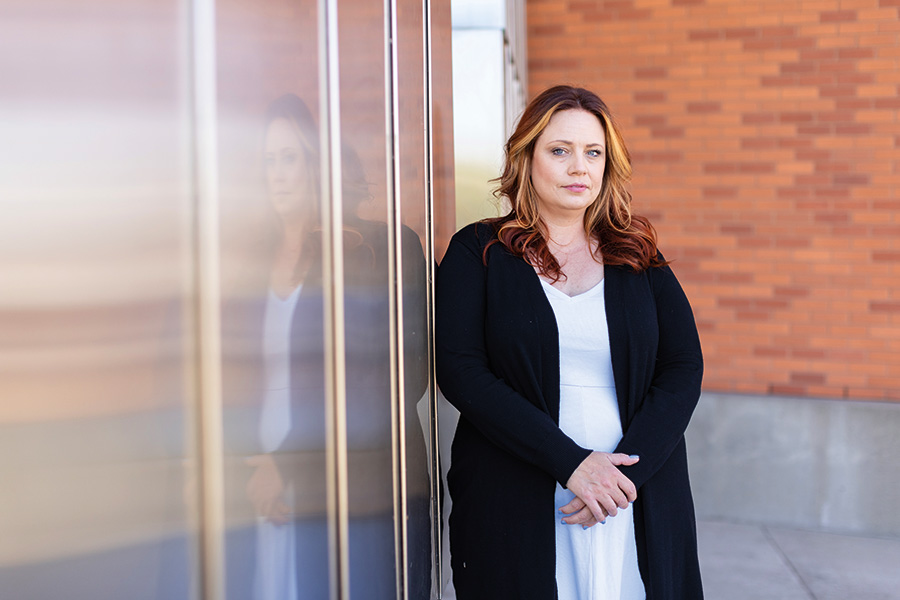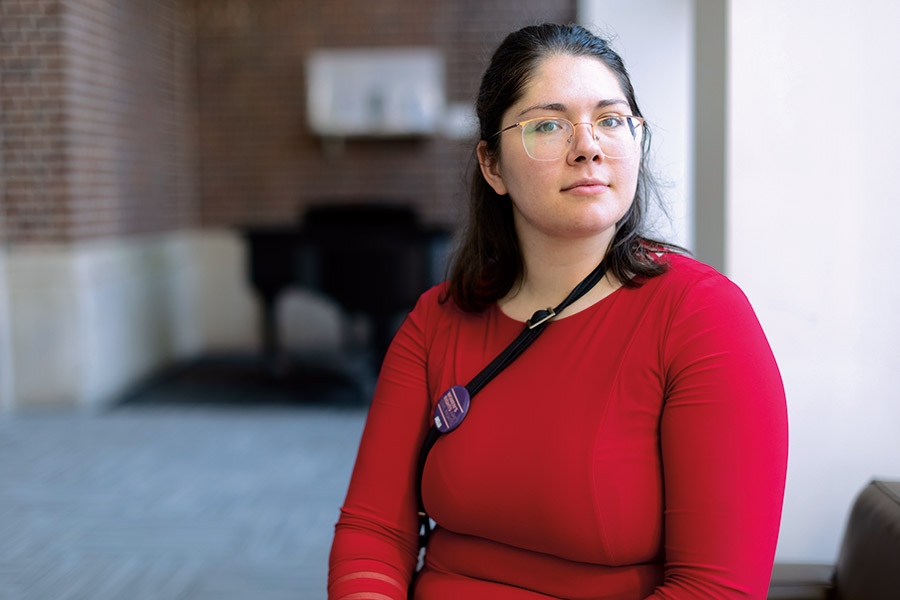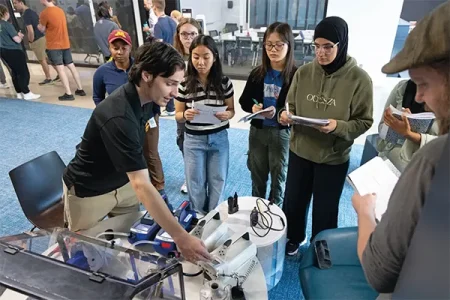Racism has no place at the School of Public Health. This is the core truth of the school’s five-year Strategic Plan for Antiracism. Launched in July 2021, the plan is the result of hours and hours of work and input over many months from the entire school community.

“I believe that an antiracist School of Public Health will be a space where we can actively and intentionally have justice-centered and antiracist conversations and folks will stay present in those conversations.
I want to see the work that we’re doing, the research we’re putting out, the centers we’re creating — all of that — really being rooted in and geared toward inclusivity and equity.”
People on committees, focus groups, and community forums considered hard questions about justice, equity, inclusion, and diversity at the school, and imagined what it could become and how it could get there. A survey assessed how community members felt about their own experiences at the school and how it treated people of color and other marginalized groups. Nearly every respondent stated that diversity, equity, and inclusion should be top priorities for the School of Public Health (SPH).
The school’s self-critique began in late 2019, and on May 25, 2020, George Floyd was murdered in Minneapolis. Mr. Floyd’s death was a catalyst for the school, adding urgency to the work of examining where racism lurked and of forging a new, antiracist path for the future.

“My vision for an antiracist school is one where justice is the main theme. It is one where we acknowledge the past and the role we have played in that and commit to and strive towards justice.
I want to see the school living this plan without even knowing it and that it just becomes who we are. I want people to seek out our school because an antiracism culture is the culture.”
“The senseless brutality of George Floyd’s murder and the deep roots of racism it revealed led our school to a deeper soul searching,” says Dean John Finnegan. “Our school’s guiding value is that health is a human right, and racism denies that right to millions of people in our country. We have a responsibility, as individuals and as a school of public health, to expose and dismantle racism’s influence wherever it is found, including within our own school.”
Living up to this responsibility is critical to the plan. It’s also what makes it inspiring — community members have the chance to not only transform the culture of this 77-year-old school and, by extension, society itself, but also transform their own thoughts and actions. To work toward both these things, the plan suggests people start by accepting that racism exists at a systemic level in our country, then commit to learning about racism’s history and its legacy. They can raise awareness about how racism is perpetuated, grappling with conflicting truths about themselves and our country, and challenging racism wherever they see it.
The plan is a primer on how to create lasting change and its theme — “Building Equity, Driving Justice” — is what the school is doing and must continue to do everyday as it lives up to the promise of the plan. Attached to that theme are the words “Commit | Challenge| Change,” which function as both mantra and marching orders for everyone involved if they truly want to make meaningful headway against racism.

“My vision is that regardless of the color of one’s skin, regardless of their religion or their country of origin, that one could view this school of public health to be a place where they belong. Furthermore, I want the people whom we serve in the Twin Cities and beyond to look at the School of Public Health and be excited to have a partnership with us, and that they feel like it’s a natural engagement.”
What one school can do
Lauren Eldridge, director of diversity, equity, and inclusion, believes the plan’s strong infrastructure, timeline-driven short- and long-term goals, and specific actions needed to meet those goals make it a solid strategy that will be hard to veer away from or dilute. The plan is a detailed roadmap towards a future where the school can make an authentic difference in the lives of its surrounding community, the country, and the field of public health. The plan is already garnering attention as an example of what one school of public health is doing to tackle racism as Eldridge and her colleague Gayle Smaller Jr., associate director of diversity, equity and inclusion, present it at local and national conferences.
Though SPH is just beginning to be actively antiracist, its faculty and students have been doing some of the most innovative research in the country around health equity for years. By exploring colorism’s impact on birth outcomes and the effect of race and ethnicity on quality of life for nursing home residents, and by discovering that fewer Black newborns die when cared for by Black doctors, among many other efforts, the school is advancing awareness of racism’s reach and ways to counter its influence.
The school’s Health Equity Work Group has conducted, promoted, and provided greater visibility to health equity research for the past 16 years. And in January 2020, the American Indian Public Health and Wellness Certificate at SPH became one of the nation’s only certificates to focus on educating students on how to work respectfully and effectively with federally recognized Tribes and American Indian communities.
In February, the school launched the Center for Antiracism Research for Health Equity, which, under the guidance of associate professor and center director Rachel Hardeman, is already considered a national leader in ending racism’s assault on the psychological and physical health of people of color. The center, established with a gift from Blue Cross and Blue Shield of Minnesota, will advance antiracist research and dovetail with and support the school’s strategic plan.
“We cannot achieve true health equity without dismantling white supremacy,” says Hardeman. “The work of antiracism takes commitment, investment, and action. The School of Public Health and the center are positioned to take concrete steps towards shared antiracist goals.”

“It’s a school without barriers — barriers to participation, finances, identity, culture, etc. It’s a school where there is no tolerance for racism in our policies, our language, our shared understandings, and our curriculum. We don’t have that right now, and that’s ok, but we need to continuously move towards it.”
The effort makes the difference
Accountability and reporting measures are integral to discerning how the plan is faring in pushing the school to be antiracist and in achieving results. SPH is developing a model for gathering, analyzing, and reporting data and it will conduct annual goal accountability checks. Even though it’s a five-year plan, the school’s work will admittedly never be finished. But it’s the effort that makes the difference. As Smaller Jr. says about the struggle against racism, “The minute you think you’ve made progress, jump back in.”
SPH is confident of its commitment to make the school a more compassionate, more aware place, working toward justice in all it does. It also recognizes that it has a tremendous amount to learn, with no real precedent to guide it. But knowing the damage of racism to every single person in our country, no matter what color or ethnicity, it is determined to fight for a better future.


